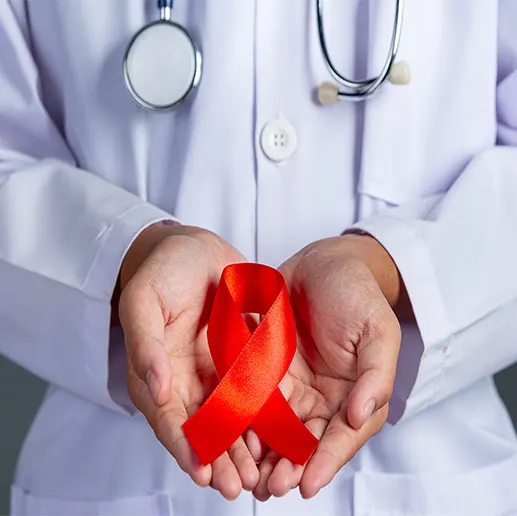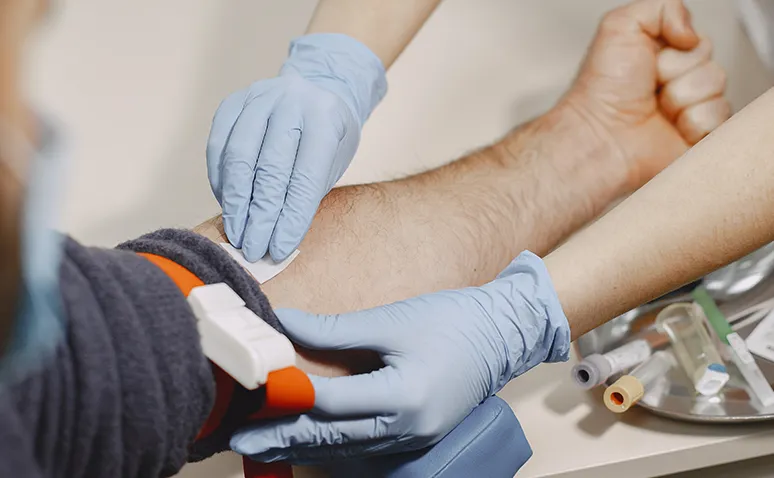What is Hepatitis D? Hepatitis D is an infectious disease that affects the liver and is triggered by the Hepatitis D virus (HDV). Unlike other types of hepatitis, the Hepatitis D virus cannot replicate on its own and is only effective in individuals already infected with the Hepatitis B virus (HBV). This makes Hepatitis D a rare yet potentially serious infection worldwide. The most common modes of transmission include contact with infected blood, the use of contaminated needles, and unprotected sexual intercourse.
What is Hepatitis D and what are the symptoms? Symptoms of the disease include fatigue, abdominal pain, yellowing of the skin (jaundice), and impaired liver function. If left untreated, it can lead to severe complications such as liver cirrhosis and liver cancer. Although there is no specific vaccine for Hepatitis D, it can be prevented through the Hepatitis B vaccine. Therefore, individuals who are immune to Hepatitis B are also protected from Hepatitis D infection.
What is the Hepatitis D Virus?
Hepatitis Delta Virus is a unique virus that only occurs in individuals infected with the Hepatitis B virus (HBV). HDV cannot replicate independently, which distinguishes it from other types of hepatitis. Although HDV is rare globally, it can cause severe damage to the liver when present and can lead to fatal outcomes if untreated.
Some people confuse HDV with HPV (Human Papilloma Virus), but these are entirely different viruses. While HPV affects the skin and mucous membranes, HDV directly damages the liver. The most distinguishing feature of HDV is the detection of delta antibodies in individuals already infected with the Hepatitis B virus. These delta antibodies serve as a biological marker confirming the presence of HDV infection and reflect the immune system’s response to HDV.
Transmission of HDV occurs through direct contact with infected blood or bodily fluids. Common pathways include the use of contaminated needles, blood transfusions, and unprotected sexual contact. Additionally, vertical transmission from mother to child during childbirth is rare but possible.
Hepatitis D often tends to become chronic, especially when co-infected with Hepatitis B. If an individual is infected with both viruses simultaneously, it may cause an acute infection. However, HDV more commonly progresses as chronic hepatitis, leading to long-term complications such as liver cirrhosis or liver failure.
The most effective way to prevent Hepatitis D is vaccination against Hepatitis B. The Hepatitis B vaccine indirectly provides immunity against the delta virus, minimizing the risk of dual infection. Regular health screenings and early diagnosis play a vital role in treatment.

How is Hepatitis D Transmitted?
Hepatitis D, which directly affects the liver, cannot replicate without the presence of the Hepatitis B virus. Consequently, Hepatitis D infection only occurs in individuals carrying the Hepatitis B virus. Since the virus can cause significant liver damage, understanding its transmission pathways and taking preventative measures are critical.
The primary modes of Hepatitis D transmission include contact with infected blood or bodily fluids. The most common route is through blood exposure, particularly through the use of contaminated needles, blood transfusions, and contact with infected medical equipment. Unprotected sexual contact also plays a significant role in HDV transmission. While transmission from mother to child during childbirth is rare, it is possible. Special precautions are necessary for healthcare workers and individuals in high-risk groups.
Hepatitis D infections often become chronic and may lead to severe complications such as liver cirrhosis or liver failure over time. Untreated, the disease can drastically reduce a person’s quality of life. Vaccination against the Hepatitis B virus is critical in protecting against Hepatitis D, as the Hepatitis B vaccine also indirectly shields against Hepatitis D infection.
Preventing the spread of Hepatitis D requires minimizing contact with blood and bodily fluids, using sterile medical equipment, and practicing safe sexual behaviors. Raising awareness about this disease and reducing risk factors are essential for maintaining liver health.
Is There a Treatment for Hepatitis D?
Hepatitis D is a challenging disease to treat as it causes severe liver damage. Currently, there is no specific antiviral treatment for Hepatitis D. However, certain methods can slow disease progression and prevent complications.
The most commonly used treatment involves interferon-based medications, which aim to strengthen the immune system and inhibit viral replication. However, interferon therapy may not be effective in all patients and requires careful administration due to its potential side effects. Treatment is long-term and requires regular monitoring.
The lack of a definitive cure for Hepatitis D underscores the importance of prevention. Vaccination against Hepatitis B provides indirect protection against Hepatitis D, as the delta virus can only replicate in the presence of Hepatitis B. Thus, immunization against Hepatitis B is the most effective way to prevent Hepatitis D infection.
Lifestyle changes are also crucial in preventing disease progression. Avoiding alcohol, maintaining a healthy diet, and undergoing regular medical check-ups help preserve liver health. With early diagnosis and appropriate treatment, the complications of Hepatitis D can be significantly mitigated.











